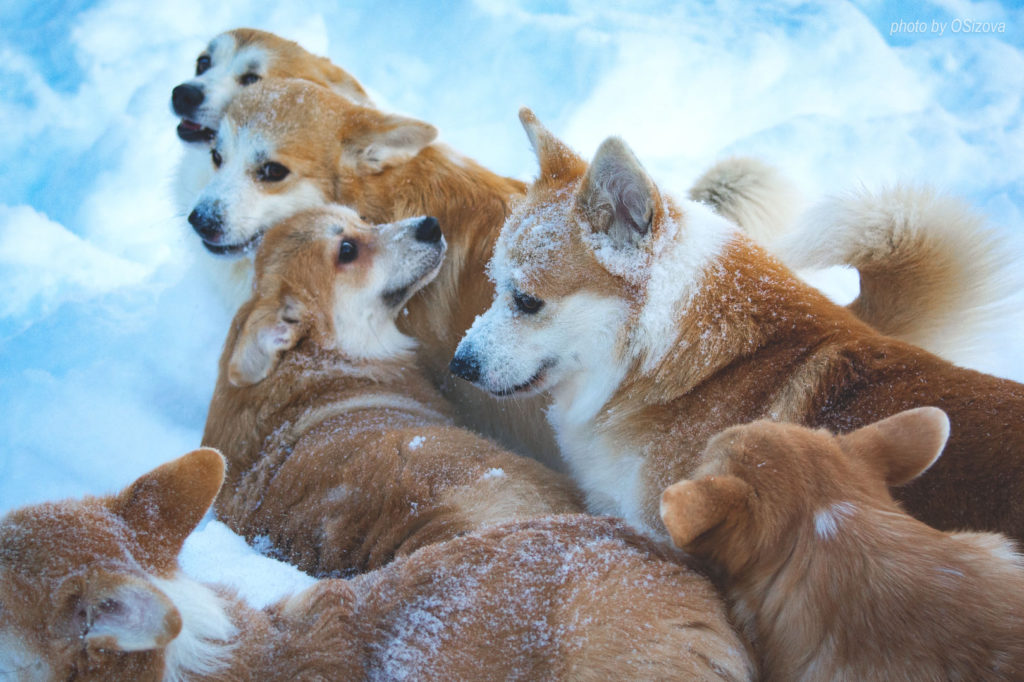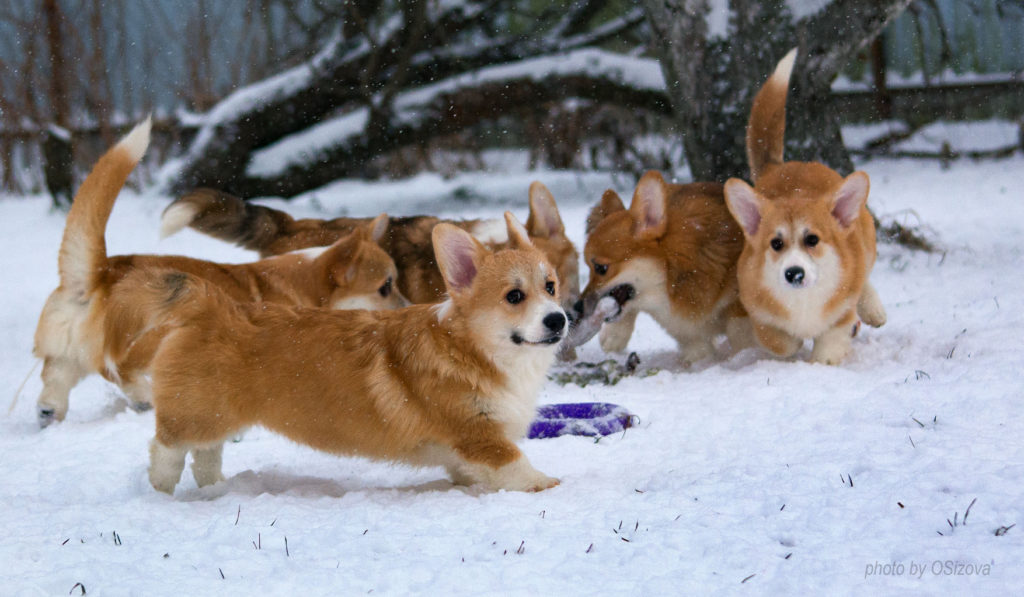Some interesting tips found on the internet 🙂
Winter is a very difficult period for us and our four-legged friends. How exactly should we prepare our Welsh Corgi for this period?
Below we will try to suggest how to help our pets. Proper preparation and protection will avoid many problems.

Clothes – only fashionable or really needed!
Primitive breeds such as Siberian husky, Alaskan malamute, Samoyed and others are prepared by nature for such conditions. They have thick fur that perfectly protects them against harsh weather conditions. Most often, clothes are needed by short-haired dogs, which do not have a profuse undercoat or are completely deprived of it, which means that they are exposed to heat loss from the body. The most common sign of a dog freezing cold is shivering from the cold. In such cases, we should equip the dog with a warm outfit for long walks. Medium-haired dogs with an undercoat, such as the Pembroke Welsh Corgi, despite their denser fur, also do not always do well in cold weather. However, we don’t have to buy them clothes – they can do without it, it’s corgi after all.
Salt – a big problem !
The salt on the road, sidewalk, park alley is a threat to corg’s paws. Just as salt eats into our shoes, it attacks dogs’ paws, causing painful cracks. In addition to salt, ice can be a problem, clumping into balls between the toes of the dog’s paw. That is why it is worth paying attention to whether the dog does not limp during the winter walk, and from time to time check that it is clean between its toes.
There are several ways to survive the winter time with our corgis without any problems: you can buy special shoes that will not allow salt and snow to damage your dog’s paws. In case of
unaccustomed, adult dogs, however, it may be problematic to put on shoes – an unaccustomed pet, instead of enjoying going for a walk, will devote all its energy to trying to take off the shoes. Therefore, if you plan to protect the paws in this way, it is best to get the dog shoes when the dog is still young and start short attempts to put them on as early as possible. As a result, when winter arrives, the dog will be accustomed to shoes and will be able to put them on easily.
Another solution is to use foot creams. They can contain petroleum jelly, paraffin oil, wax, propolis. These substances perform a protective and caring function.

Winter hair – natural clothing!
Just like the skin of humans, fur is a natural barrier in dogs and it is it that we must pay the most attention to.
We use shampoos and conditioners with a high content of oily substances, such as lanolin or e.g. coconut oil. Well-oiled, nourished hair will be much less prone to snow or ice sticking to it. We should pay attention especially to places particularly exposed to this type of ailments (hair on the paws, which we can cut as much as possible, and curtains under the belly) – that’s where we apply the most oiling preparations.
We’re going outside right now:
First of all, before going for a walk, do not “overheat” the dog by, for example, active play at home. The best solution is to gradually reduce the dog’s body temperature, for example by opening windows in the room where the pet is or letting the dog in just before walking into a room with a lower temperature, such as a garage or vestibule. Similarly to a human, disease complications may occur when the body is warmed up when the body is warmed up.
We keep our fingers crossed and it will probably only snow in the mountains 🙂